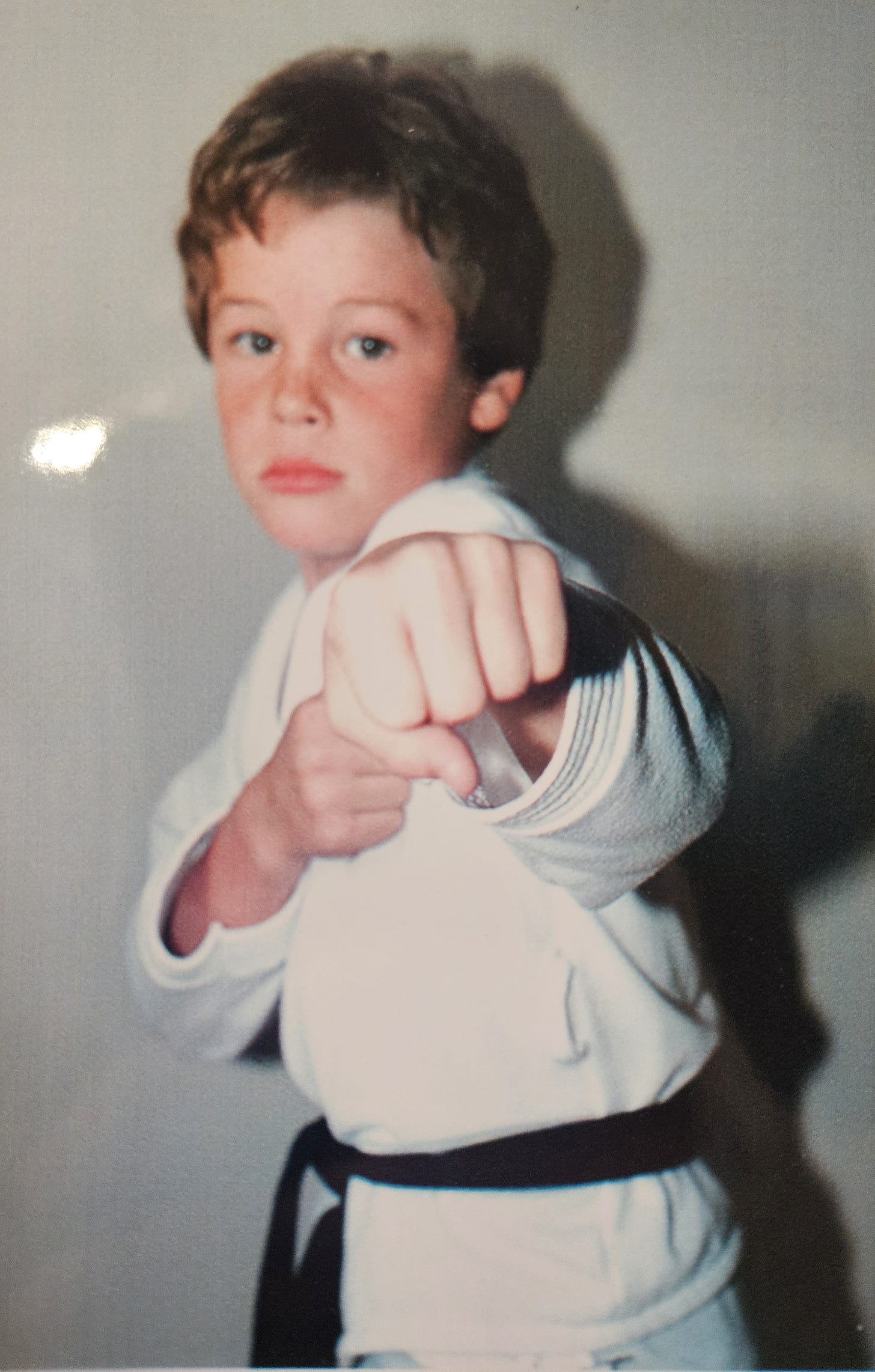Surprising Myself
Karate was the coolest thing I knew about.
I had just seen Daniel LaRusso destroy the competition at the All-Valley Karate Championships, a seminal event that showed how technique would beat brute force. This was every 98 pound weakling’s fantasy, and although I wasn’t a small kid, I always identified with the person being bullied, not the Cobra Kai types.
I jest about the fictional tournament featured in the Karate Kid, but the parts of the movie I was most impressed by always involved Pat Mortia’s character, Mr. Miyagi. Miyagi would often simply redirect force when someone punched at him, throwing them off balance and giving him an opportunity for a most merciful counter.
One quote from Miyagi stuck in my mind more than any other:
Best defense: no be there.
I loved this concept, and it was novel to me. I dove into the idea of maximizing leverage by simply getting out of the way of an attack (and maybe helping someone along in a particular direction). I was observing and appreciating some of the core principles that Miyagi’s style has in common with judo. This attitude extended to the persona Miyagi and other martial artists I followed:
There was Mr. Miyagi from the aforementioned Karate Kid franchise, who would cautiously avoid any kind of confrontation, even to the point of looking like a wimp in front of people. The same was true of David Carradine’s portrayal of Kwai-Chang Caine on Kung Fu, and it tends to be true of the really seasoned martial artists I know.
We all understand that getting into a fight is a thing to be avoided, and we get that humility is sometimes our best defense.
Training martial arts at an actual academy would have been prohibitively expensive, but there was one summer where my mom hooked me up with a summer camp with a bunch of different activities. There were arts and crafts, which I also appreciated and enjoyed, but karate was the main attraction for me.
There I was in karate class, living my best Young Andrew life, doing line drills—the sort where everyone practices the move together, so the instructor can call out a move and then it’s easy to see any deviations. Let’s call this particular instructor Sensei Jones, since I can’t remember his real name.
This particular technique involved a defense against someone swinging a sword at you—or honestly, maybe it didn’t and I just pulled Sensei Jones aside to ask a question. If it was a question, it was all about how to deal with a sword slash from above in particular.
I was certain Sensei Jones would say that the proper technique was to get out of the way. After all:
Best defense: no be there.
I knew the rules! That’s why it really surprised me when he demonstrated a block using your forearm, presumably shielding the rest of your body from the sword strike.
I had learned (and practiced hard!) the corkscrew punch, which I presumed amplified leverage. I could see the wisdom in keeping a consistent stance, and I certainly appreciated that a properly delivered kick could be a very effective weapon.
However, when Sensei Jones told me that I should step forward into the sword strike and boldly block with my forearm, I felt as though something was off. My martial arts Spidey-sense began tingling, or my relatively early bullshit detector went off, if you’d prefer.
I called bullshit.
Won’t… won’t that result in you having your arm cut off, I asked?
Better to lose your arm than your head was his less-than-reassuring answer.
I think I know what happened here. Sensei Jones felt as though I was challenging his authority, so he had to give an answer that defended his terrain, as he saw it. His answer was as forceful as it was silly. It was a cover your own ass sort of answer.
It was because I said so.
To the surprise of nobody who has consistently read my stuff here, Young Andrew left karate for good after that summer, with a permanent disillusionment in the shortcomings of human beings, mostly—and a desire to learn genuine techniques that efficiently used leverage, all in an environment where your coaches never lied to you or just made up answers on the spot in a defensive manner.
That was going to be wrestling, but not for a couple more years and several broken bones.



Raised in the Philippines, I attended judo class at the Polo Club. I was 15. A bully in the class got in my face during a sparring session, so I punched him in the mouth, twice.
This was not a judo move. He backed away, and I thought I might be in trouble with the instructor, but he told me, "Good for you."
A couple of years later, a karate instructor who had lived in Korea spent several sessions talking to us about improvised weapons.
You never see crystal ashtrays in restaurants anymore, and what a shame that is.
"...and then along came Jones..."